The extinct ancient human Homo erectus is a species of firsts. It was the first of our relatives to have human-like body proportions, with shorter arms and longer legs relative to its torso. It was also the first known hominin to migrate out of Africa, and possibly the first to cook food.
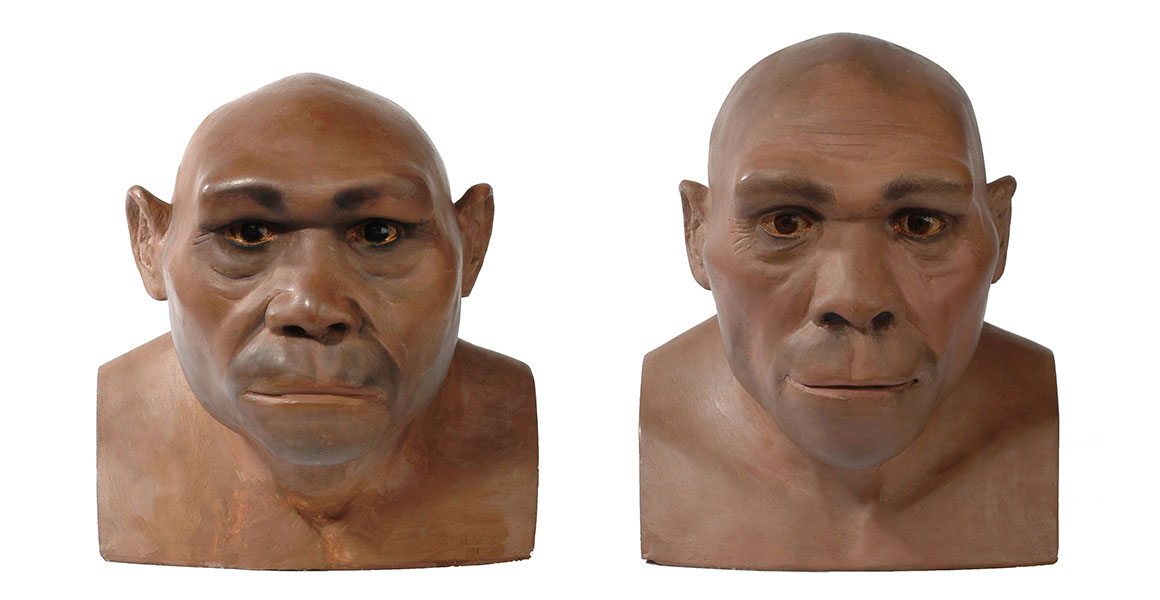
Reconstructions of Homo erectus based on fossils from different locations. There is a lot of variety between individuals, which may be accounted for by the species having existed for so long and over such a wide area.
In terms of species survival, Homo erectus is a huge success story. Fossil evidence for H. erectus stretches over more than 1.5 million years, making it by far the longest surviving of all our human relatives.
Compare this to our own species, Homo sapiens, which has been around for perhaps 400,000 years so far, and we begin to appreciate their ability to survive over a long period marked by many changes to the environment and climate.
H. erectus was also the most geographically widespread species apart from H. sapiens. H. erectus appeared in Africa about two million years ago, evolving from either a late form of australopith or one of the more primitive forms of Homo, and went on to spread into many parts of Asia.
Scientists disagree over how H. erectus and H. sapiens relate to each other, but most agree that H. erectus can be called an ancestor of modern humans.
Homo erectus facts
- Lived: from about two million years ago until at least 250,000 years ago
- Where: Africa, Asia and perhaps Europe
- Appearance: human-like body proportions and upright stance, a protruding brow ridge, large face and no chin
- Brain size: about 550-1,250cm3
- Height: about 1.4-1.8m
- Weight: about 41-65kg
- Diet: meat (initially from scavenging but later potentially also from hunting) and plants
- Species named in: 1893 (as Anthropopithecus erectus, renamed Pithecanthropus erectus in 1894 and Homo erectus in 1950) following its 1891 discovery
- Name meaning: 'upright human'
When did Homo erectus live?
H. erectus is the longest lived of all human species. Although some researchers believe that what we now know as erectus consists of several distinct species (including Homo georgicus and Homo ergaster), most accept a broad diagnosis of the species.
The earliest fossils that are complete enough to display the anatomical pattern of H. erectus are from eastern Africa and western Asia, and are about 1.5 to 1.9 million years old. The conventional view is that the species evolved in Africa about two million years ago.
Precisely when - and why - H. erectus disappeared is unclear, but it appears to have survived in parts of Indonesia until at least 250,000 years ago.
Disputed evidence of the very late survival of H. erectus on the Indonesian island of Java exists in the form of fossil braincases (the part of the skull that encloses the brain) and a few other fragments. Some methods have dated these to older than 200,000 years, others to less than 50,000 years. The fossils show the characteristic H. erectus anatomy, but display brain sizes up to 50% larger than earlier examples of the species from the island.
Where did Homo erectus live?
Current evidence suggests all hominins before H. erectus lived in Africa. However, almost as soon as this species appears in the fossil record there is evidence it expanded out of Africa and into western Asia, then to eastern Asia and Indonesia.
A small skull fragment from East Turkana, Kenya, dates to about 1.9 million years ago, supporting an African origin. But the first fossils were found in Asia, and it is in Asia where this species survived for so long.
Fossil evidence for H. erectus in western Asia comes from exciting finds, made at Dmanisi in Georgia from 1991 onwards, that are about 1.8-1.85 million years old.
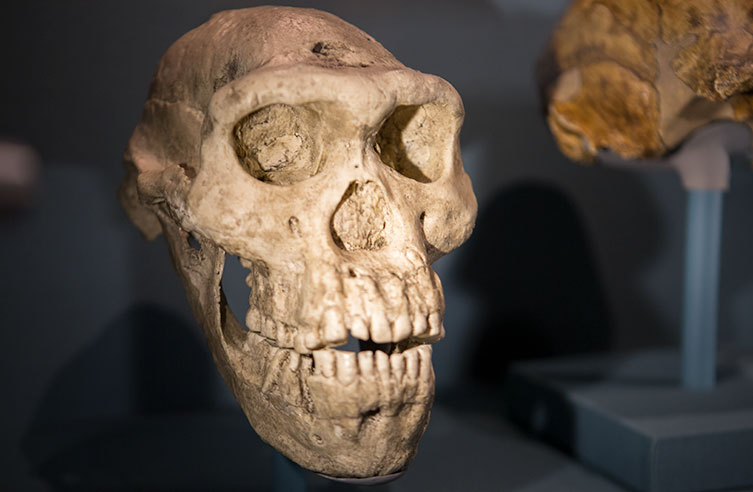
Cast of skull 5 (D4500) - the most complete Homo erectus skull found at Dmanisi, Georgia - on display in the Museum's Human Evolution gallery. The original fossil skull is about 1.8 million years old.
The species spread into eastern Asia, including China, where it appears to have been present until at least 300,000 years ago.
In southeast Asia, H. erectus was a long-term inhabitant of Java. H. erectus fossils there date from about 1.6 million years to at least 250,000 years ago.
The species may have survived more recently in Taiwan, the Philippines and on the Indonesian island of Sulawesi, but the evidence isn't conclusive.
We don't know whether H. erectus reached Europe. But since the assortment of animal fossils found at Dmanisi closely resembles the forest and grassland fauna of southern Europe from the same time, an early human settlement of that region is at least a possibility.
Where did our species, Homo sapiens, evolve?
Why did Homo erectus leave Africa?
Dispersal of species happens for many reasons but essentially H. erectus probably drifted across northern Africa, across the Sinai Peninsula into Asia, when environmental changes meant suitable habitats and food sources stretched that far.
For example, sabre-toothed cat remains were found alongside H. erectus fossils in Georgia. The cats apparently dispersed from Africa. These specialised carnivores lacked the teeth to strip a carcass clean of its meat, so might have provided scavenging opportunities for early humans following them out of Africa.
It is likely that the spread of H. erectus as far as Java, across what are now islands of Southeast Asia, was possible because these were connected at the time.

Java was intermittently connected to the Southeast Asian mainland, allowing Homo erectus to take up residence there. The species survived on Java for a very long time, until at least 250,000 years ago. © Mohd Farid/Shutterstock.com
Meat was an important part of the diet of H. erectus and some carnivorous animals range more widely than herbivores. This, together with their larger body size, may explain the broad geographic range of H. erectus.
Homo erectus characteristics
The species H. erectus is highly varied - not surprising considering it existed for so long and over such a wide area.
H. erectus is the oldest known species to have a human-like body, with relatively elongated legs and shorter arms in comparison to its torso. It had an upright posture.
By studying the remains of the very complete skeleton known as Turkana Boy, scientists have concluded that H. erectus walked and ran in much the same way as we do.
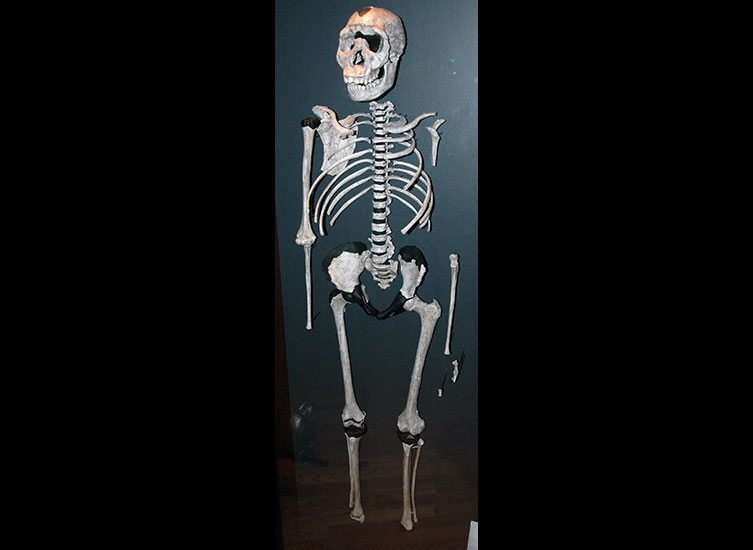
Replica of the skeleton known as Turkana Boy and Nariokotome Boy on display at the Field Museum of Natural History, Chicago, USA. It is the most complete early Homo specimen ever discovered. Image © James St John via Flickr, licensed under CC BY 2.0
Individuals were comparable to humans today in terms of body size and shape, although they were more muscular and had much wider hips. Adults grew to about 1.4-1.8 metres tall and weighed 41-65 kilograms.
H. erectus brain size was smaller than that of humans today - in some cases nearly half the size - and their skulls were thicker.
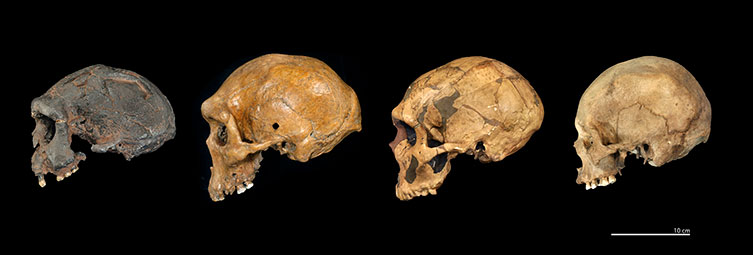
From left to right: skulls of Homo erectus, Homo heidelbergensis, Homo neanderthalensis and Homo sapiens. The braincase of H. erectus was more elongated than that of later humans. It had a prominent brow ridge, like H. heidelbergensis.
Early H. erectus had smaller, more primitive teeth, a smaller overall size and thinner, less robust skulls compared to later specimens.
The species also had a large face compared to modern humans. Like Neanderthals, their skull was long and low, rather than rounded like our own, and their lower jaw lacked a chin.
A prominent brow ridge was present over the eye sockets. Virtually all archaic humans have a brow ridge - this feature reached its maximum size in some H. erectus.
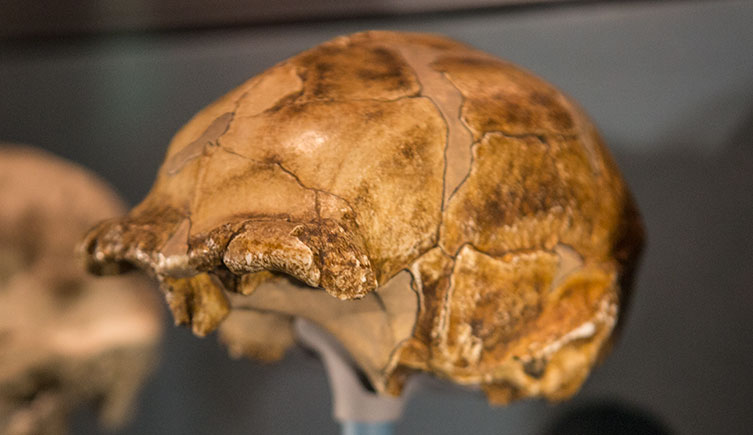
Cast of Homo erectus skullcap (top part of a skull) from China showing the prominent brow ridge of this species, on display in the Museum's Human Evolution gallery
What were brow ridges for?
There has been a lot of debate about what function the brow ridge had, if any.
Most ideas concentrate on its role as a feature that strengthened the skull or helped dissipate forces passing through the skull. Researchers have recently indicated the latter was unlikely, instead speculating that it may have had a role in social signalling between archaic human individuals, enhancing friendly or aggressive facial expressions.
What tools did Homo erectus use?
H. erectus was the first human species to make handaxes (Acheulean tools). These were sophisticated stone tools crafted on two sides. They were probably used to butcher meat, among other purposes.
Prior to that, the tools of ancient humans and their predecessors, including those of the first known H. erectus (at Dmanisi, for example), were much more primitive - simply rock flakes knapped to a sharp edge.
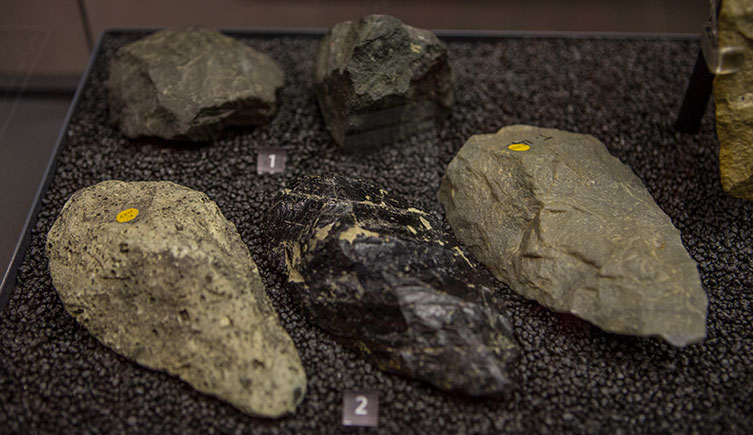
Foreground: Acheulean tools first made by Homo erectus, on display in the Museum's Human Evolution gallery. These two-sided handaxes were complex stone tools that continued to be made for more than a million years. Background: more primitive tools.
What did Homo erectus eat?
Early H. erectus was equipped with a simple set of stone tools that looks best suited to scavenging meat. Later H. erectus peoples produced a wider range of stone tools and were probably active hunters.
Some experts believe that the long-legged physique of H. erectus evolved to facilitate long-distance jogging and running across open country to acquire meat.
While meat formed a key part of their diet, it is likely that plant resources were also important and they lived as hunter-gatherers.
Did Homo erectus use fire?
The use of fire is an important milestone in human evolution, granting access to light, warmth, protection from predators and the ability to cook food - each of which aids survival.
Scientists don't know when humans were first able to make fire at will. Early humans probably captured natural fires and kept them alight for as long as they could.
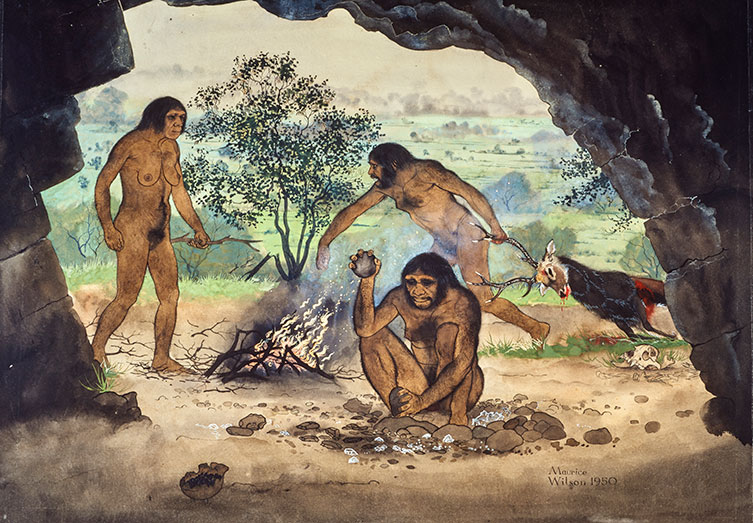
Illustration by Maurice Wilson showing Homo erectus using fire and preparing tools
H. erectus may have been the earliest human relative to have controlled fire.
Evidence is quite thin on the ground, but for example, researchers found evidence of ash as well as burnt bone fragments in a one-million-year-old sediment layer in the Wonderwerk Cave in South Africa. The site is too far inside a cave for the ash to be caused by a lightning strike and the spontaneous combustion of bat guano was ruled out.
History of Homo erectus discovery
The first H. erectus fossils were found in 1891 on the Indonesian island of Java by a Dutch doctor called Eugène Dubois.
Before these discoveries, Neanderthals were the only early human for which fossils had been found.
Dubois unearthed an isolated tooth (Trinil 1) and - most importantly - the top part of a skull (Trinil 2) and a thigh bone (Trinil 3). Together they have often been referred to as Java Man.
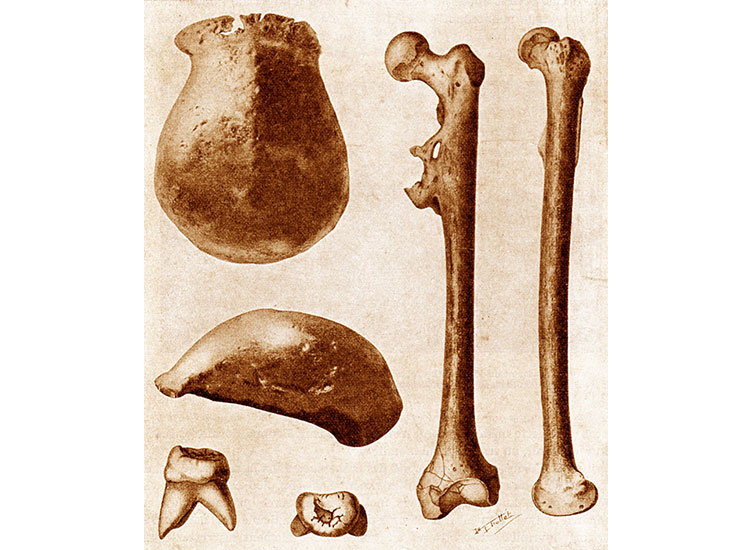
Drawing of the first Homo erectus fossils found in 1891 on Java, showing the tooth (Trinil 1), skullcap (Trinil 2) and thigh bone (Trinil 3). Homo erectus fossils illustration via Wikimedia Commons, public domain
The thigh bone indicated the creature had an erect, human-like posture, but the skullcap indicated its brain was much smaller than humans today and featured a distinct brow ridge.
By 1940 many more H. erectus remains had been unearthed, both in Java and China.
Dmanisi discoveries and Homo georgicus
From 1991, surprising new finds were being made at Dmanisi in Georgia. Under the remains of a medieval village, archaeologists found a variety of extinct fauna, including ostriches, primitive deer, rhinoceroses, large carnivores and a human lower jaw.
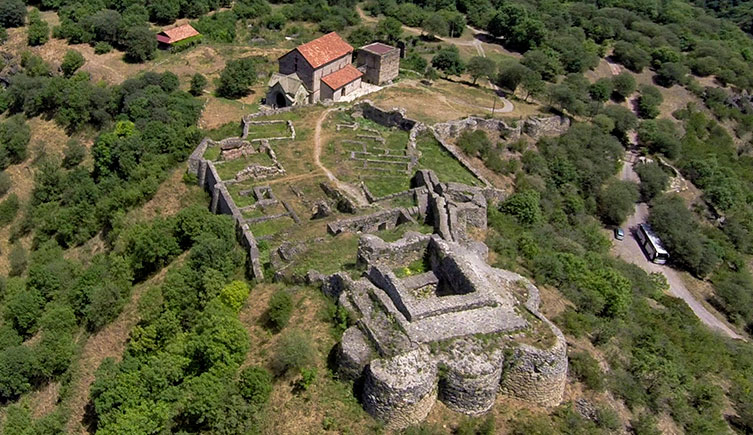
Dmanisi castle, with Sioni Cathedral and archaeological site - where important Homo erectus finds have been made - in the background. Image © Larry V Dumlao via Wikimedia Commons, licensed under CC BY-SA 4.0
Further excavations and research indicate the material is about 1.8-1.85 million years old. The site has now produced five small-brained human skulls, three more jawbones and many other parts of the skeleton, as well as simple stone tools.
The skull shape looks like a primitive version of the H. erectus morphology, while the leg bones are relatively small, indicating an adult body size of only about 1.5 metres and a weight of about 45 kilograms.
Some researchers believe that the distinctive features of the Dmanisi fossils (including the smaller body and brain sizes) point to this being a more primitive species than H. erectus, which could be called Homo georgicus. However, others feel that these features simply reflect its position as a very early member of the species H. erectus.
Important Homo erectus fossils
Although Java Man was the first H. erectus discovery, the find that has revealed most about this species is Turkana Boy.
- Turkana Boy (KNM_WT 15000 skeleton)
The skeleton of a young H. erectus male discovered at Nariokotome in the West Turkana region of Kenya. Unearthed in 1984, the skeleton is around 1.5 million years old and represents the most complete ancient human specimen ever discovered. Investigations show that although the boy was only about nine years old, he was nearly fully grown. He was 1.6 metres tall when he died.
- Peking Man fossils
A set of around 200 Homo erectus fossils from more than 40 individuals unearthed at the Zhoukoudian archaeological site near Beijing in the 1920s and 1930s. They were originally assigned to the now-obsolete group Sinanthropus pekinensis. The fossils, which included several relatively complete skulls, went missing during the Second World War. Fortunately, casts had been made. The site has been dated to 780,000 to 400,000 years ago.
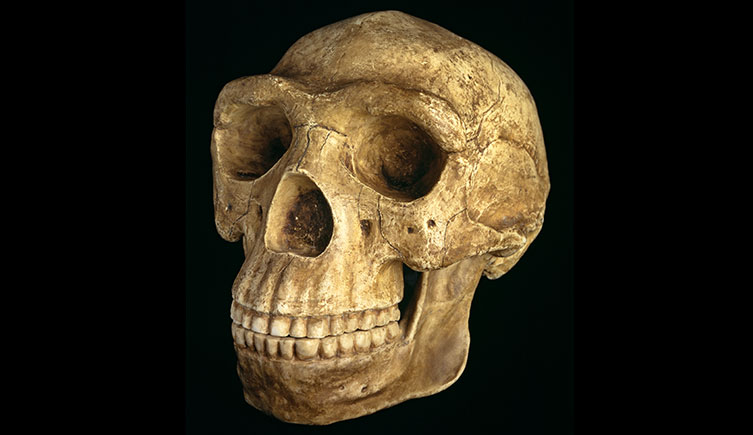
Reconstruction of one of the Peking Man Homo erectus fossils excavated from China. Most of the original fossils were lost in World War Two.
- Dmanisi skulls
Five H. erectus skulls were discovered at Dmanisi in Georgia from 1991 onwards. They look quite different from each other, but analysis by researchers shows that the amount of variation is comparable to that seen among modern people or chimpanzees.
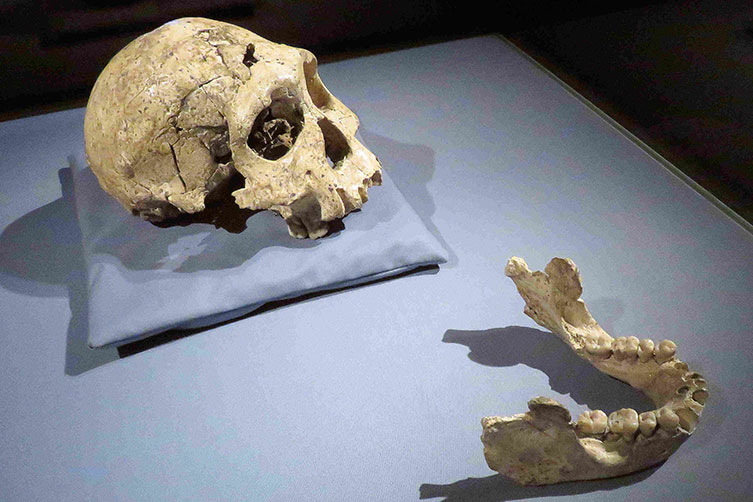
Dmanisi fossils D2700 (skull 3) and D2735, around 1.8 million years old. The Dmanisi skulls look like an early form of Homo erectus. Image © Gerbil via Wikimedia Commons, licensed under CC BY 3.0
This article includes information from Our Human Story by Dr Louise Humphrey and Prof Chris Stringer.

Explore human evolution
Museum science is helping to answer where, when and how humans evolved.
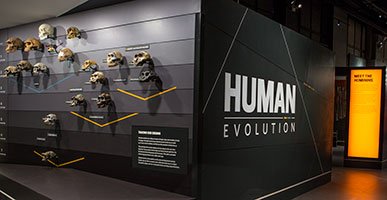
Meet your ancient relatives
Embark on a seven-million-year journey of evolution and see fossil and artefact discoveries in the Human Evolution gallery.
What links people and pangolins?
Explore our origins with Professor Anjali Goswami as we trace 200 million years of evolution in our online and on-demand course.
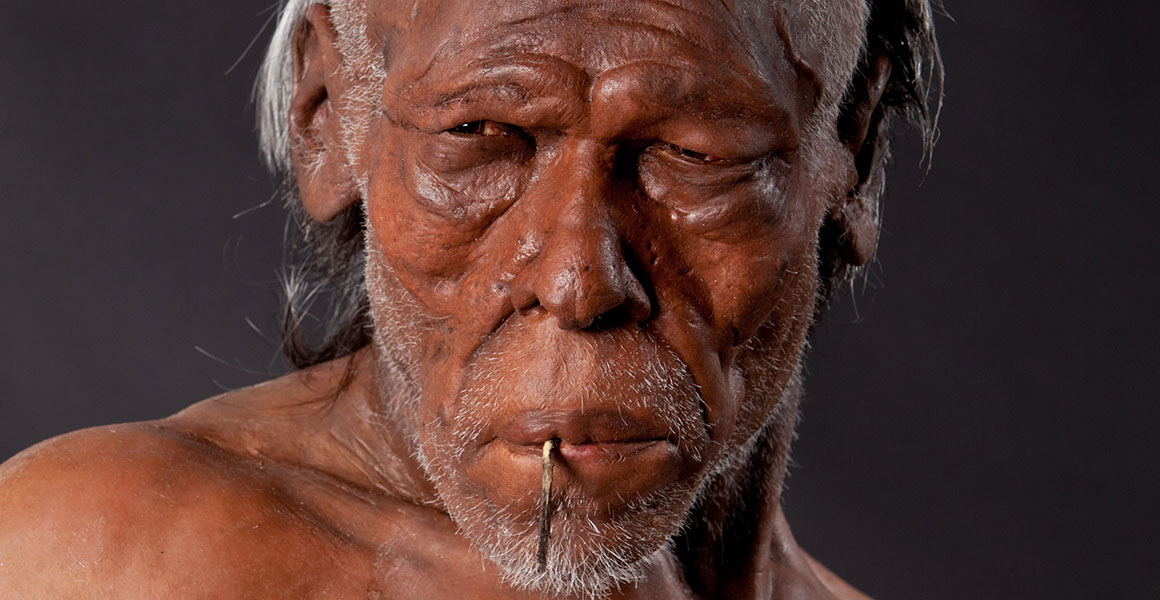
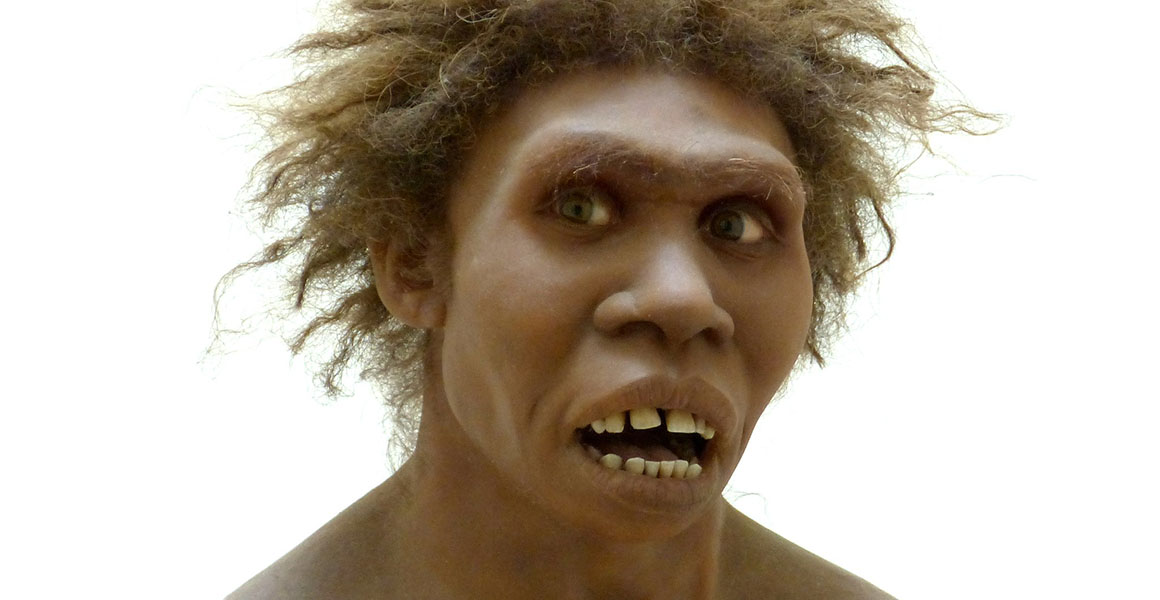
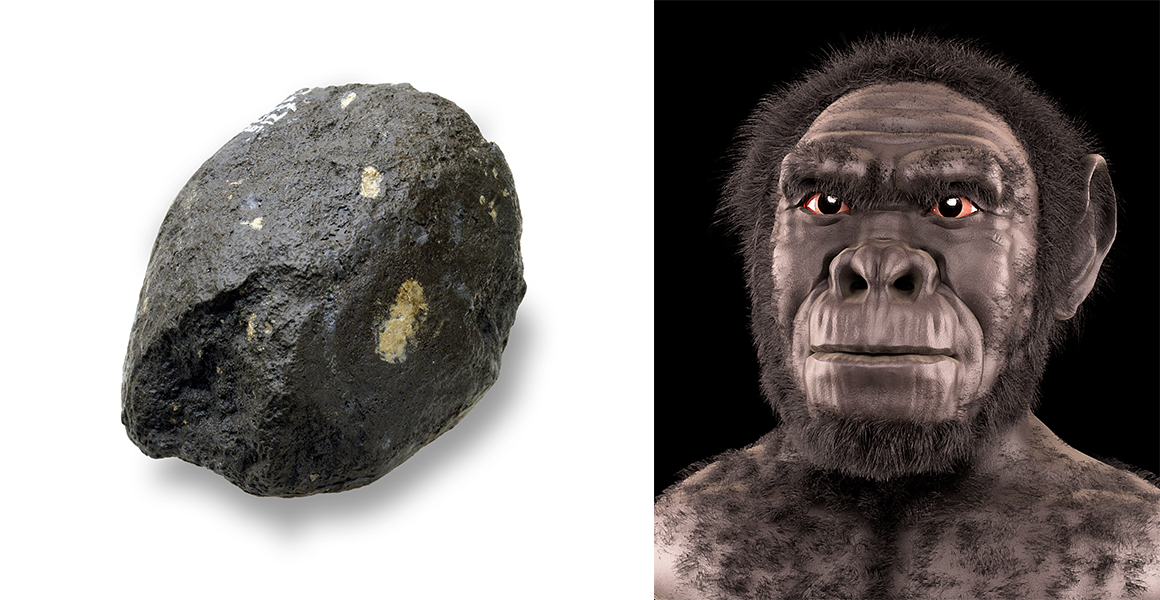
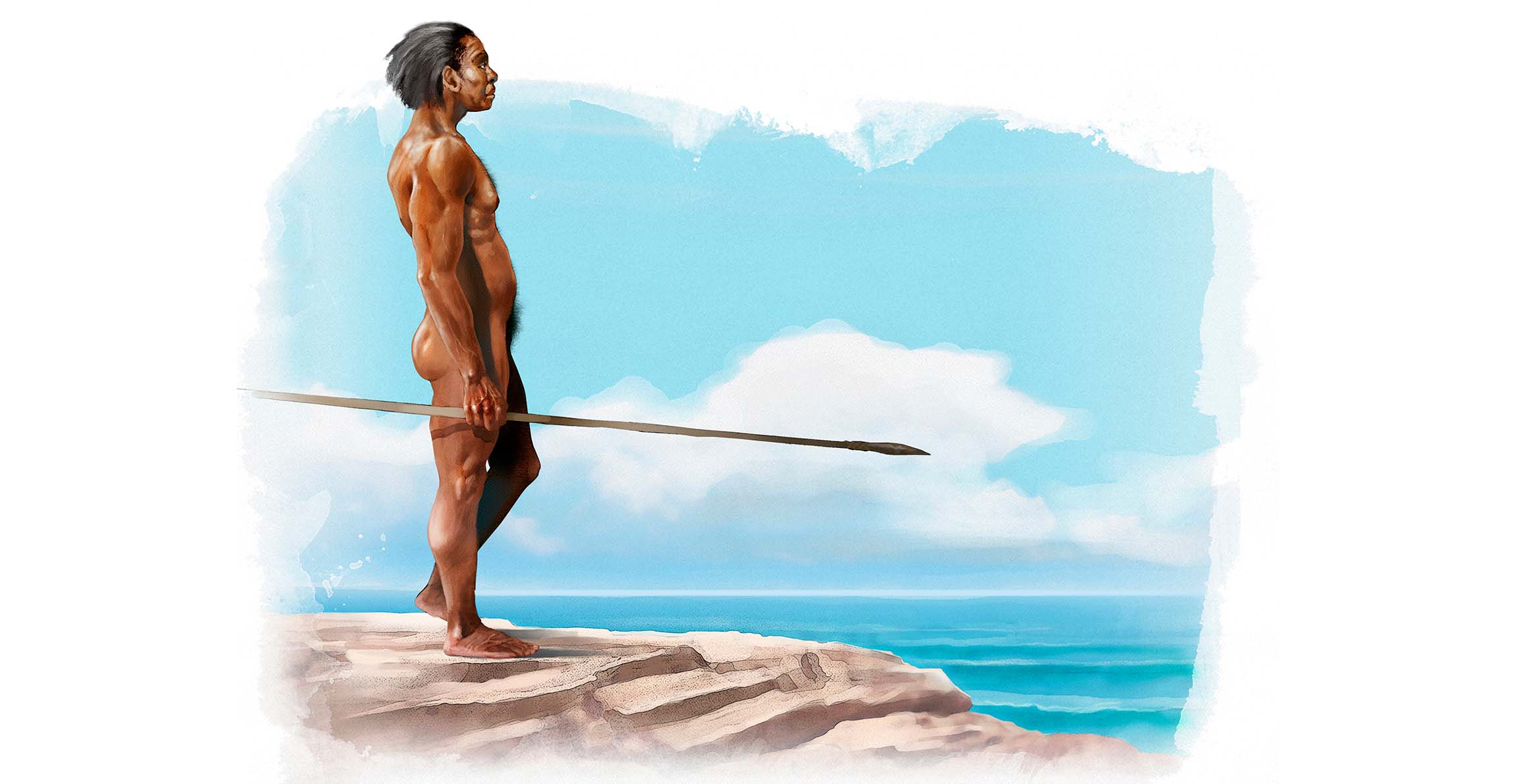
Don't miss a thing
Receive email updates about our news, science, exhibitions, events, products, services and fundraising activities. We may occasionally include third-party content from our corporate partners and other museums. We will not share your personal details with these third parties. You must be over the age of 13. Privacy notice.
Follow us on social media